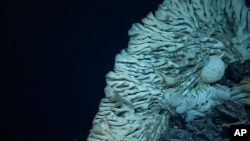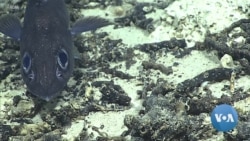Banning fishing and other human activity in marine protected areas (MPAs) has long pitted environmentalists against fishing interests, but a new study shows that nearby fisheries benefit from these areas.
The study comes as the United States considers establishing the world’s largest MPA in the Pacific Ocean southwest of Hawaii, waters where “fishing remains a major contributor to food security … and income generation,” according to a review by the science journal BMC Public Health.
Mark Costello, a professor of biosciences and aquaculture at Norway’s Nord University and the study’s author, reviewed 51 studies of MPAs. He found that 39 of them showed increased catch in adjacent fisheries since their MPA designation.
The National Geographic Society estimates that approximately 5,000 MPAs exist worldwide, covering 0.8% of the world’s oceans.
Costello says the study’s data provides economic incentives for the Conference of Parties Global Biodiversity Framework goal set in 2022 of preserving 30% of the ocean by 2030.
“If we think of [MPAs] as a benefit to fisheries, this completely changes the conversation from setting aside 30% that nobody can do anything with to actually 30% that is like having money in the bank,” Costello said in an interview with VOA via Zoom on March 27.
He said traditional Indigenous communities often protect certain areas so fish can spawn because they want to be sure that fish are available “in a time of maybe crisis due to other food supplies not being available.”
Fish in protected areas “grow older, they’ll have more eggs, and they’ll spill over to the adjacent areas. So, you get those benefits,” Costello added.
Last year, the United States took a big step in trying to meet that 30% goal.
In March 2023, U.S. President Joe Biden proposed a marine sanctuary in the remote Pacific islands of nearly 2 million square kilometers, saying it would be “the largest protected ocean area on the planet.”
The Marine Conservation Institute’s Marine Protection Atlas shows the Ross Sea Region MPA as the largest MPA covering 1.9 million square kilometers.
Biden’s proposed MPA is bigger than the 1.5 million-square-kilometer reserve President Barack Obama established in 2016, a sanctuary that dwarfed and included the 300,000-square-kilometer sanctuary established by President George W. Bush in 2009 to protect parts of three remote Pacific island chains that are U.S. possessions.
Biden’s proposal has met with pushback in the Pacific Islands, where residents felt there wasn’t enough time for public input on a permanent change to their fishery access.
“When you are trying to create something in perpetuity … 45 days to take that away from a people is not enough,” said J.D. Tenorio, a resident of Saipan who spoke at a May 18, 2023, public meeting held in the Northern Mariana Islands, a U.S. territory.
According to the Marine Protection Atlas, two of the three largest MPAs are in the Pacific. They include fishing grounds off the coast of Hawaii, as well as the U.S. territories of Guam, the Northern Mariana Islands and the Marshall Islands.
Costello says not all MPAs are permanent, adding it is important to consider the idea of reviewing the MPA designations.
“Maybe everything should be relooked at in 20 years' time,” he said. “The next generation should have a say.”
Ray Hilborn is a University of Washington professor in the School of Aquatic and Fishery Sciences who serves on the Western Pacific Regional Fishery Management Council, which covers Hawaii, the territories of American Samoa and Guam, the Commonwealth of the Northern Mariana Islands, and several Pacific Remote Island Areas.
The council opposes Biden’s proposed sanctuary, and Hilborn says MPAs are not a “silver bullet” for conservation in the Pacific region.
“Most of the MPAs in the world are being created in countries that have good fisheries management, like the United States, like Australia, like New Zealand, like Canada, and those benefits are not going to happen in those places,” he said in a Zoom interview with VOA on March 27.
Hilborn also said MPAs can hurt the fishing industry, especially when implemented in areas where overfishing is not an issue, as is the case for the Biden administration’s sanctuary proposal.
He cites a study published in the May 2020 edition of Marine Policy on the expansion of the Papahanaumokuakea Marine National Monument in 2016. It concludes that the MPA designation triggered a drop of 7% in catch per unit of effort and a decrease of revenue per fishing trip by 9%, or $3.5 million during the first 16 months after it was enacted in June 2006.
Hilborn said the Costello study supports an “illusion that you’re really protecting” the ocean, but “the real protection comes by action. And those actions are regulating fisheries [and] reducing bycatch” — the fish caught by fleets that crews can’t sell, don’t want or are not allowed to keep.







